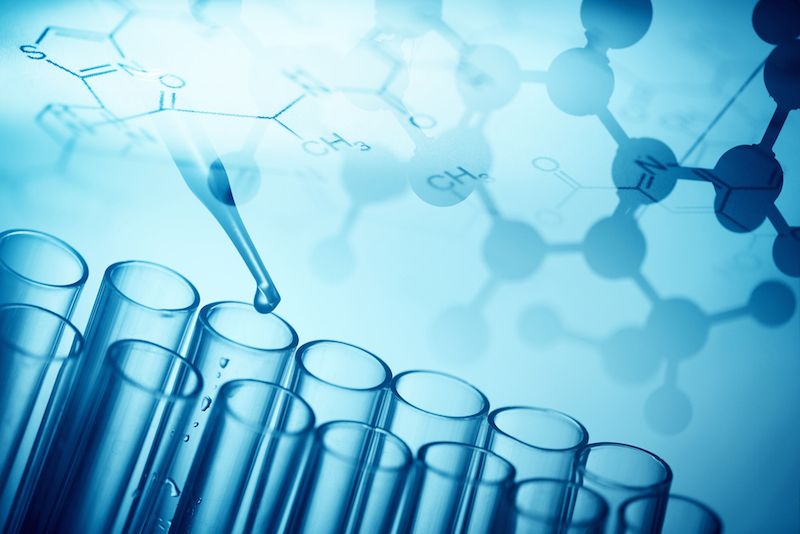Strange Beasts: Why Human-Animal Chimeras Might Be Coming

The federal government may soon lift its ban on funding research that uses so-called human-animal chimeras. But what medical benefits could such research bring?
Yesterday, the National Institutes of Health announced it plans to consider funding research that would inject human stem cells into animal embryos. This would create an embryo that has two different sets of cells, an animal set and a human set, something that's known as a chimera. Previously, the NIH had issued a moratorium on funding this type of research while the institute considered whether new regulation policies were needed.
Although this research is controversial, its supporters say it could advance medical science in several ways.
Some researchers are interested in creating new types of animal models with human tissue to help study human diseases as well as early human development, according to the NIH. Researchers might be able to better study heritable human diseases, and find drugs that work against these diseases, by using chimera animal models, several stem cell scientists wrote in a letter published in the journal Science last year. [Bionic Humans: Top 10 Technologies]
Perhaps the most widely discussed implication of the research is its potential to create animals that contain human organs, which could then be transplanted into patients. It might be possible to "generate an unlimited supply of therapeutic replacement organs," by using pig or sheep chimeras, the Science letter said.
One of the authors of that letter, Dr. Hiromitsu Nakauchi, a genetics professor at Stanford University School of Medicine, is working on a project to explore growing human organs in pigs and sheep. So far, about 20 pig-human or sheep-human embryo chimeras have been created in the project, but the researchers did not bring any of those embryos to term, MIT Technology Review reported. The ethics committee that approved the research allowed for the embryos to be developed for only 28 days.
The project's ultimate goal is to find a technique that could be used to create organs that are genetically matched to any specific patient, by using stem cells from that patient in the chimera.
Sign up for the Live Science daily newsletter now
Get the world’s most fascinating discoveries delivered straight to your inbox.
Although other scientists are attempting other techniques to grow human organs in a lab, this is difficult because organ development usually requires complex interactions between the developing organ and other organs and tissues inside the body, according to a press release from Stanford.
To make sure that a chimeric animal grew only specific human organs, the scientists would first genetically engineer the animal embryo so that it wouldn't be able to produce a certain organ. Then, they would add stem cells from a patient, with the idea that these cells could grow the missing organ, according to MIT Technology Review.
However, some people have been concerned that human cells might go somewhere within the animal's body that they weren't intended to travel, according to the NIH. There is a particular concern that human cells might travel to an animal's brain or nervous system, and affect the animals' cognition, the NIH said. In the NIH's new policy, there will be a separate review process for studies in which human cells could possible make a "substantial contribution" to an animal's brain.
The NIH policy will still prohibit research that would inject human stem cells into the embryos of other primate species (like monkeys and chimpanzees) at early stages of development.
Additionally, researches would not be allowed to create human-animal chimeras in which human cells contribute to the animal's sperm or egg cells, and researchers would not be able to breed human-animal chimeras, according to the NIH.
It's important to note that researchers have used different kinds of "humanized" animals for years. For example, researchers can genetically engineer mice to have an impaired immune system, and then engraft the mice with human tissues to create a human immune system. This lets the researchers, for example, do early experiments that are not ready to be done yet in people.
But human-animal chimeras are different from such animals, because making a chimera involves placing human cells into animal embryos at very early stages of development, when the human cells could potentially take on any number of functions.
NIH is allowing a 30-day comment period before its new funding proposal goes into effect.
Original article on Live Science.

Rachael is a Live Science contributor, and was a former channel editor and senior writer for Live Science between 2010 and 2022. She has a master's degree in journalism from New York University's Science, Health and Environmental Reporting Program. She also holds a B.S. in molecular biology and an M.S. in biology from the University of California, San Diego. Her work has appeared in Scienceline, The Washington Post and Scientific American.











